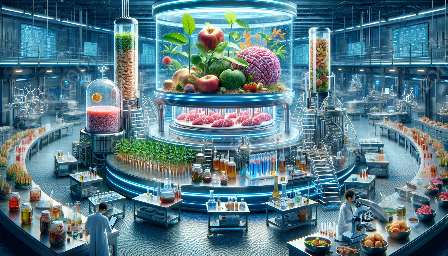As demand for sustainable solutions in the food & drink industry grows, the use of biodegradable packaging materials is gaining traction. In this article, we will delve into the various aspects of biodegradable packaging materials for food, their compatibility with food biotechnology, and their impact on the food industry.
The Importance of Biodegradable Packaging Materials
With increasing awareness of environmental issues, there is a growing need for biodegradable packaging materials in the food & drink industry. Biodegradable packaging offers an eco-friendly alternative to traditional plastics, reducing environmental pollution and promoting a circular economy.
Types of Biodegradable Packaging Materials
Biodegradable packaging materials can be derived from various sources, including plant-based, animal-based, and synthetic polymers. Plant-based materials, such as PLA (polylactic acid) and PHA (polyhydroxyalkanoates), are popular choices for biodegradable food packaging due to their renewable nature and compostability.
Other biodegradable materials, such as chitosan and alginate, derived from natural sources like crustacean shells and seaweed, offer sustainable alternatives for food packaging, particularly in food biotechnology applications.
Compatibility with Food Biotechnology
Biodegradable packaging materials play a crucial role in the field of food biotechnology, where advanced materials are required to ensure food safety, preservation, and shelf-life extension. These materials can be tailored to meet specific packaging needs, such as barrier properties, antimicrobial properties, and controlled release of active ingredients, making them ideal for use in food biotechnology applications.
Advantages of Biodegradable Packaging Materials
- Sustainability: Biodegradable packaging materials help reduce the carbon footprint of the food & drink industry and contribute to sustainable practices.
- Compostability: Many biodegradable materials are compostable, allowing for organic waste management and soil enrichment.
- Enhanced Shelf Life: Certain biodegradable materials offer effective barrier properties, prolonging the shelf life of packaged food products.
- Reduced Environmental Impact: Compared to traditional plastics, biodegradable materials have a lower impact on the environment, including marine ecosystems and landfill waste.
Environmental Impact of Biodegradable Materials
While biodegradable packaging materials offer significant environmental benefits, their production and disposal also have potential environmental implications, such as resource consumption and energy use. It is important to consider the complete life cycle of biodegradable materials, from sourcing to end-of-life management, to minimize their environmental impact.
Future Outlook and Innovation
As the demand for sustainable packaging solutions continues to grow, ongoing research and innovation in biodegradable packaging materials are essential. Advancements in material science, biotechnology, and food packaging technologies are driving the development of new and improved biodegradable materials that meet the diverse needs of the food & drink industry.
Conclusion
Biodegradable packaging materials for food offer a promising avenue for sustainable packaging solutions, aligning with the principles of food biotechnology and the evolving demands of the food & drink industry. Embracing the use of biodegradable materials can lead to positive environmental and economic outcomes, paving the way for a more sustainable future in food packaging and preservation.

